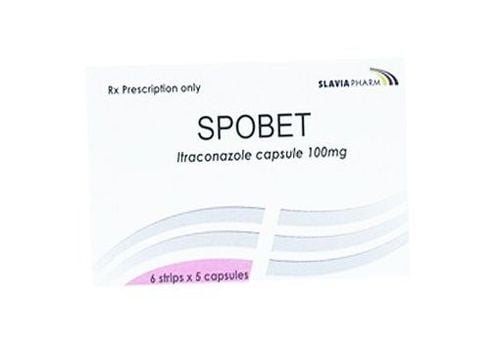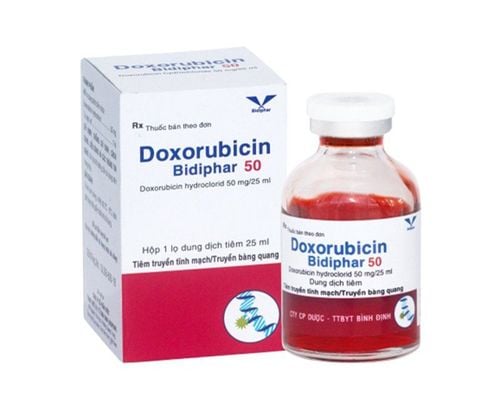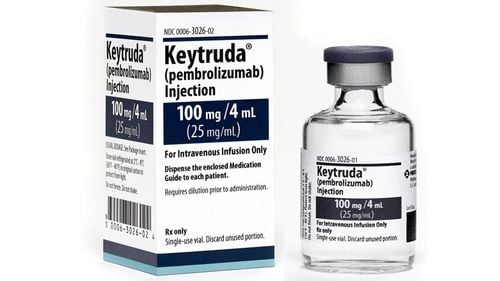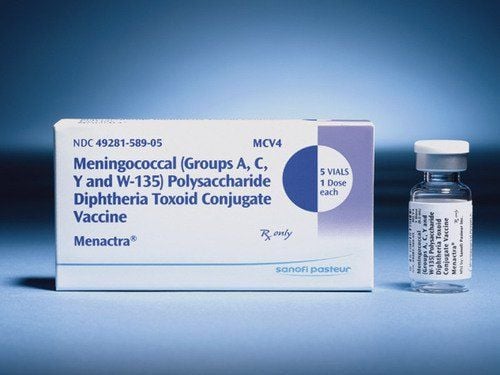This is an automatically translated article.
What is Fopranazol? Medicines are used to treat infections caused by bacteria or fungi. When taking the drug you need to be aware of side effects and contraindications. The following is some information to share with readers about Fopranazol 150 mg.
1. Uses of Fopranazol 150mg
Fopranazol is indicated for use in the treatment of infections of bacterial or fungal origin. Besides, patients can also use Fopranazol to prevent the risk of infection after surgery. Here are a few cases that are indicated for treatment with Fopranazol:Treatment of inflammatory Candida fungi affecting reproductive health Fungi in the oropharynx and mouth, esophagus, urinary tract.. Treatment of inflammation meningitis Fungi caused by other bacteria Prophylactic use in patients with impaired immune system Use in patients who have recently undergone surgery to fight infection Use of drugs in patients with cancer or The disease of the century weakens the immune function. The effect of the drug will be effective when the concentration of the drug in the body increases gradually. After absorption, the drug will be excreted in the urine and 30 hours after the dose, the elimination half-life will end. Fopranazol is contraindicated for use in patients who are allergic to the drug or its ingredients. If you have a history of drug allergies, carefully check the ingredients to prevent the risk of drug allergies.
2. Dosage and how to use Fopranazol 150mg
Fopranazol is made in the form of tablets for oral use. Patients can ask more doctors about when to use and how long to take the drug to ensure the desired effect. In specific cases, the doctor will give appropriate advice to maximize the effectiveness of the drug. Dosage of Fopranazol is adjusted in neonates and adults. You can follow the following dosage reference:
Adults Treatment of vaginal yeast infections should take a single dose of 1 tablet. The duration of treatment is expected to last from 4 months to 1 year until the desired effect of the drug or problems need to be stopped. Single dose of 1 tablet per day for up to 2 weeks for patients with infections oropharynx and around the mouth The dose for patients with bacterial infections in the esophagus is 1 tablet for 3 weeks of continuous treatment, which can be extended from the time the symptoms are gone. Patients with new systemic fungal infections will take 3 tablets / time, then reduce to 1 tablet according to specific conditions. Treatment should last about 1 month. The time to take the drug is usually 2 weeks after the patient finds out that there are no signs of the patient's meningitis or immune deficiency syndrome, taking the first dose of 3 tablets. The following doses can be considered 1 - 3 tablets as directed by the doctor. The duration of treatment can be short or long, so it is necessary to consult a specific doctor. Patients receiving postoperative infection prophylaxis will have their dose adjusted based on their neutrophil count. In patients with renal failure or patients undergoing hemodialysis, the dose should be adjusted according to the measurement index. Young children Newborns who are subject to medication need to be supervised and monitored by a doctor regularly. For infants 2 weeks after birth, the dose is calculated as 2 - 6 mg by weight for each use. The interval between doses is 72 hours apart. Babies 2 - 4 weeks will take the same dose but the intervals need to be 48 hours. Neonatal dosage applies when prophylactic treatment of young children. In cases of fungal infections in children, if signs are more severe, the dose should be increased to 6-12 mg/kg per day. The maximum dose of Fopranazol for children in a day does not exceed 0.6 g.
3. Side effects of Fopranazol
According to the evaluation and analysis from experiment to reality, you can anticipate a few common side effects such as:
Headache Dizziness Vomiting Abdominal pain Passing stool Increase in serum liver index Rash on upper body skin Eosinophilia Anemia Decreased red blood cells Skin peeling Anaphylactic shock High fever Pleural effusion
4. Interaction with Fopranazol
Fopranazol 150mg drug may appear to interact when used with some drugs. The mechanism of interaction of this drug is quite complex, so it is difficult for patients to fully understand. When prescribing, the doctor will anticipate a few situations for the patient to take precautions. However, the level of her interaction decreased but cannot be completely confirmed.
In order to minimize the unwanted interactions of Fopranazol, you should inform your doctor about your medical history. The diseases that have been diagnosed or are being treated with a list of drugs being used will be the basis for the doctor to evaluate and find the cause of drug interactions, if any.
In addition to avoiding drug interactions, patients need to maintain healthy living habits. Exercise and eat a nutritious diet will help improve health and improve the immune system. From there, the attack of viruses and bacteria will be minimized without harming the patient's health as well as reducing bad interactions.
Fopranazol 150mg can be used for many different subjects. To ensure health safety, ask for more advice from your doctor before taking the medicine.
Please dial HOTLINE for more information or register for an appointment HERE. Download MyVinmec app to make appointments faster and to manage your bookings easily.













